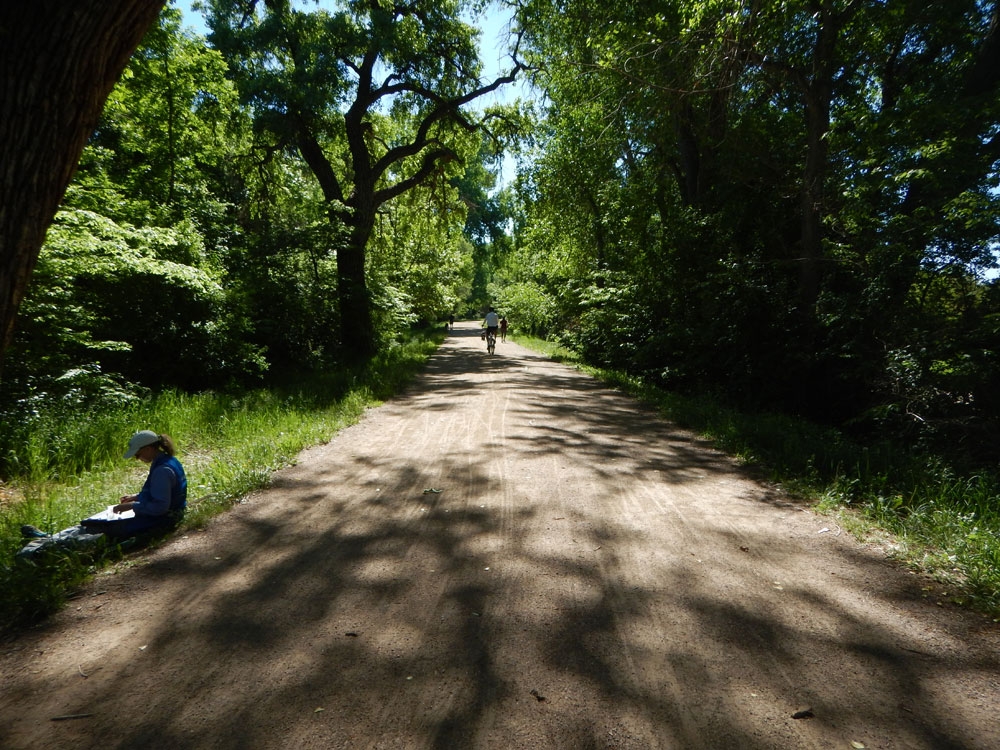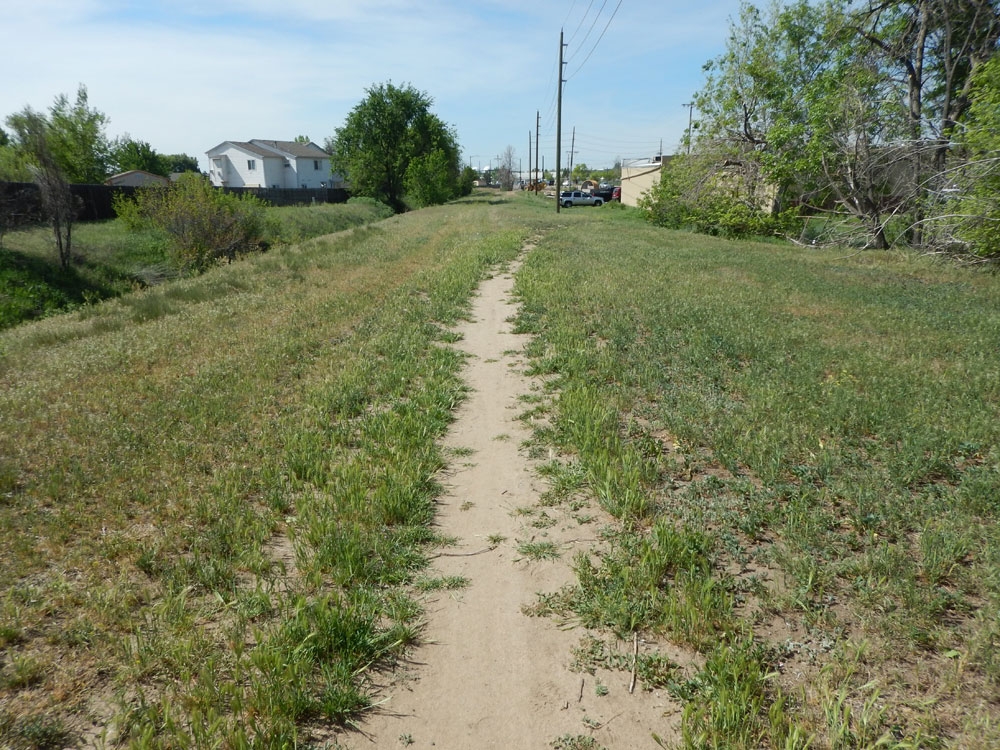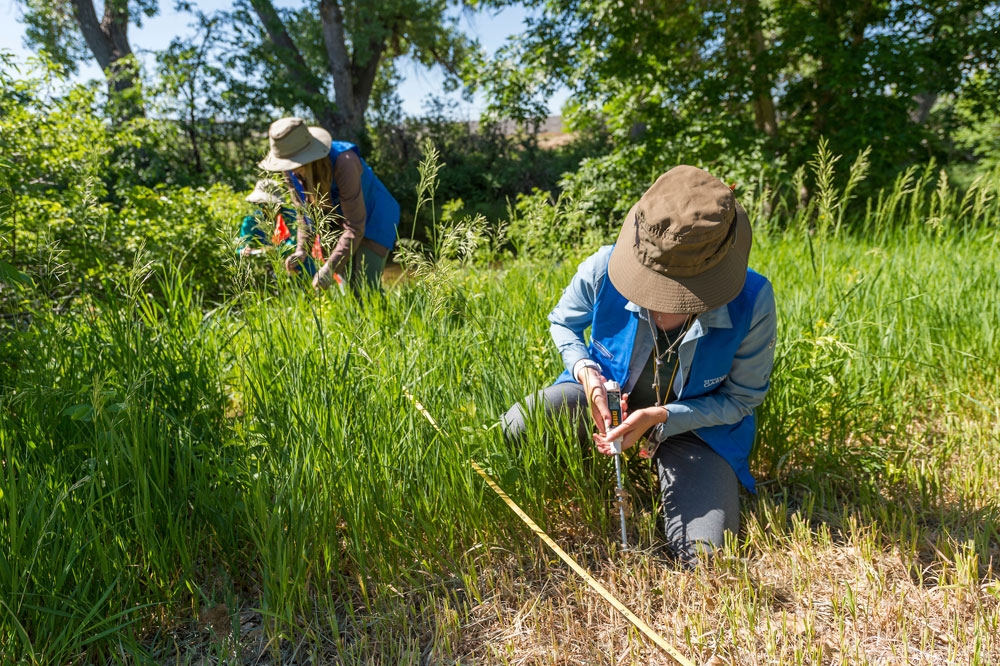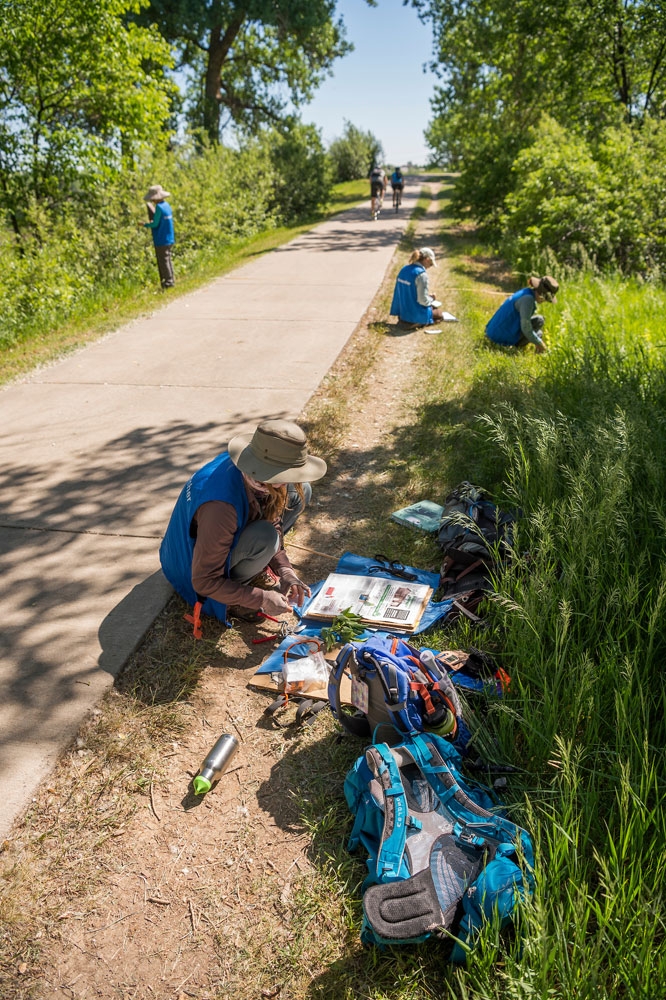Ecology Along the High Line Canal
This summer we began a new research project surveying the High Line Canal to understand the botanical and ecological resources along this corridor through the Denver Metro Area. The High Line Canal spans 71 miles across Colorado from Waterton Canyon in Littleton to Green Valley Ranch east of Denver. Once used to ferry water to the eastern plains for irrigation, the High Line Canal has transformed into a popular biking, walking and horseback riding trail.
Many changes occur across these 71 miles in both the trail itself, as well as the surrounding plants and environment. The trail transitions from a wide, hard-packed dirt walking path to a cement sidewalk and to a barely discernible, unmanaged dirt path that could be easily mistaken for any other social trail. The canal, too, goes through a dramatic transformation as it progresses north. The southern reaches of the canal maintain the most reliable water levels throughout the year, but the canal runs dry for most of its length as it winds northward.
As the water level changes, so does the associated vegetation. The southern reaches are characterized by very large, very old cottonwoods that tower over the canal like patient sentinels. Long-time hikers of the canal trail (and Denver Botanic Gardens researchers), appreciate the long stretches of shade and cool relief these trees provide on hot summer days. Willows and other moisture-loving shrubs, forbs and grasses make up the understory of these reaches.
However, as one follows the trail northeast towards more urban areas, the vegetation changes dramatically to a drier, grassland prairie habitat. Cottonwoods and willows still grow directly adjacent to the canal along some reaches, but grasses and drought tolerant shrubs become the dominant species. Invasive, weedy species such as dandelions, thistles and escaped cultivated species also take over in the drier, more disturbed canal areas.
These shifts and transitions make the canal an evolving, dynamic being and allow those who utilize this area for recreation to experience the wide range of plants that Colorado has to offer. We hope that the ecological surveys we conducted this summer will help guide future management and enjoyment of the High Line Canal.
This blog post was written by Meghan McGill, seasonal botanist in the Research & Conservation Department.
Gallery




Add new comment